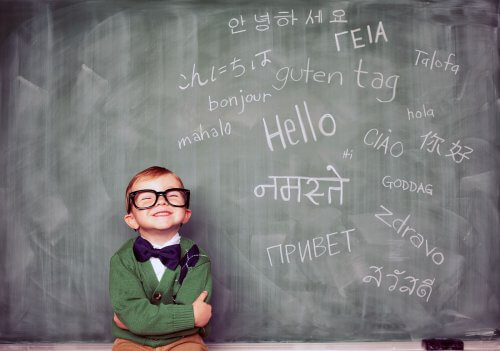The Pros and Cons of Bilingual Education

Many parents wonder whether or not they should send their children to an institution that offers bilingual education. Is this a beneficial alternative? What are the benefits of bilingual education?
Below, we’ll look at the pros and cons of bilingual education:
The advantages of bilingual education
There are many benefits to learning in two languages simultaneously in the classroom, including the following:
- Children who participate in bilingual programs learn a second language must faster than adults. This accelerated learning is possible because students must process low levels of complex information. And, of course, they’re less prone to experience issues like embarrassment than adults who are learning a new language.
- The simultaneous learning of two languages maximizes children’s ability to accept and celebrate diversity. Furthermore, it’s a great opportunity to learn to appreciate differences, rather than feel fear or discriminate.
- Bilingual education offers students increased opportunities in the future, given that it broadens their professional opportunities. Individuals who know a second language can earn up to 20% more than those who speak just one. It’s important to remember that we’re living in an interconnected and diverse world.
Brain, memory and concentration
- Bilingual education boosts brain development. The part of the brain that is responsible for learning new things and promoting spacial growth can be further stimulated by bilingual education. This training leads to increased brain growth in order to carry out simultaneous tasks.
- Stimulates concentration in students and, of course, learning in general. Each language learned makes becoming fluent in another language easier and faster.

- Improved memory capacity, since it gives students a greater ability to process new information: Concepts, experiences, etc.
- There are many benefits in regards to the personality of children who learn and speak various languages. Those that demonstrate the ability to handle this learning increase their capacity to process new sounds. This is especially true for children who regularly use the separate languages.
- These children are much less prone to experience personality disorders, including anxiety. In general, they’re less lonely than other children their age who speak only one language. In consequence, they also tend to have a greater self-esteem.
- Bilingual education stimulates a desire to learn and opens the door to study abroad opportunities. What’s more, it promotes enriching personal experiences through the interaction with other cultures. This all contributes to the development of a more well-rounded individual.
“The simultaneous learning of two languages maximizes children’s ability to accept and celebrate diversity. Furthermore, it’s a great opportunity to learn to appreciate differences.”
The disadvantages of bilingual education
While bilingual education has a number of benefits and advantages, there are also some disadvantages, including the following:
- One of the most frequent arguments against bilingual education is that students end up not fully identifying with their local culture.
- Bilingual education tends to widen cultural gaps rather than closing them. It also adds complexity to certain subjects, such as math and science.
- Forcing children to learn a second language limits the time and effort that they can dedicate to other tasks. This can, in turn, affect their true potential. Parents should be on alert for any warning signs.

- A problem with bilingual education that is often pointed out is the absence of qualified teachers. These types of programs require expert teachers who are exclusively dedicated to the task.
- In some cases, bilingual education is taught inconsistently. However, some educational institutions close, or don’t impart bilingual teaching every day. In order for the learning of a second language to be effective, it must be constant, daily, and last a person’s entire educational career.
- Educational programs aimed at teaching a second language are becoming less and less common due to their high cost. Educational programs that involve only one language are much more simple and economical.
As you can see, bilingual education has a great number of benefits for children. However, parents should also consider the disadvantages.
Before making a decision, parents should consider their child’s needs, as well as the quality of the programs at hand.
Many parents wonder whether or not they should send their children to an institution that offers bilingual education. Is this a beneficial alternative? What are the benefits of bilingual education?
Below, we’ll look at the pros and cons of bilingual education:
The advantages of bilingual education
There are many benefits to learning in two languages simultaneously in the classroom, including the following:
- Children who participate in bilingual programs learn a second language must faster than adults. This accelerated learning is possible because students must process low levels of complex information. And, of course, they’re less prone to experience issues like embarrassment than adults who are learning a new language.
- The simultaneous learning of two languages maximizes children’s ability to accept and celebrate diversity. Furthermore, it’s a great opportunity to learn to appreciate differences, rather than feel fear or discriminate.
- Bilingual education offers students increased opportunities in the future, given that it broadens their professional opportunities. Individuals who know a second language can earn up to 20% more than those who speak just one. It’s important to remember that we’re living in an interconnected and diverse world.
Brain, memory and concentration
- Bilingual education boosts brain development. The part of the brain that is responsible for learning new things and promoting spacial growth can be further stimulated by bilingual education. This training leads to increased brain growth in order to carry out simultaneous tasks.
- Stimulates concentration in students and, of course, learning in general. Each language learned makes becoming fluent in another language easier and faster.

- Improved memory capacity, since it gives students a greater ability to process new information: Concepts, experiences, etc.
- There are many benefits in regards to the personality of children who learn and speak various languages. Those that demonstrate the ability to handle this learning increase their capacity to process new sounds. This is especially true for children who regularly use the separate languages.
- These children are much less prone to experience personality disorders, including anxiety. In general, they’re less lonely than other children their age who speak only one language. In consequence, they also tend to have a greater self-esteem.
- Bilingual education stimulates a desire to learn and opens the door to study abroad opportunities. What’s more, it promotes enriching personal experiences through the interaction with other cultures. This all contributes to the development of a more well-rounded individual.
“The simultaneous learning of two languages maximizes children’s ability to accept and celebrate diversity. Furthermore, it’s a great opportunity to learn to appreciate differences.”
The disadvantages of bilingual education
While bilingual education has a number of benefits and advantages, there are also some disadvantages, including the following:
- One of the most frequent arguments against bilingual education is that students end up not fully identifying with their local culture.
- Bilingual education tends to widen cultural gaps rather than closing them. It also adds complexity to certain subjects, such as math and science.
- Forcing children to learn a second language limits the time and effort that they can dedicate to other tasks. This can, in turn, affect their true potential. Parents should be on alert for any warning signs.

- A problem with bilingual education that is often pointed out is the absence of qualified teachers. These types of programs require expert teachers who are exclusively dedicated to the task.
- In some cases, bilingual education is taught inconsistently. However, some educational institutions close, or don’t impart bilingual teaching every day. In order for the learning of a second language to be effective, it must be constant, daily, and last a person’s entire educational career.
- Educational programs aimed at teaching a second language are becoming less and less common due to their high cost. Educational programs that involve only one language are much more simple and economical.
As you can see, bilingual education has a great number of benefits for children. However, parents should also consider the disadvantages.
Before making a decision, parents should consider their child’s needs, as well as the quality of the programs at hand.
All cited sources were thoroughly reviewed by our team to ensure their quality, reliability, currency, and validity. The bibliography of this article was considered reliable and of academic or scientific accuracy.
- Fishman, J. A. (1976). Bilingual Education: An International Sociological Perspective. https://eric.ed.gov/?id=ED144354
- May, S., Hill, R., & Tiakiwai, S. (2004). Bilingual/immersion education: Indicators of good practice. Final Report to the Ministry of Education, New. http://www.kns.ac.nz/files/6d9cf62d1d8e8824/file_set_file/0000/0532/May,%20Hill,%20Tiakiwai%20(2004)%20Education%20Counts.pdf
- Krashen, S. D. (2001). Bilingual education: Arguments for and (bogus) arguments against. GEORGETOWN UNIVERSITY ROUND TABLE ON LANGUAGES AND LINGUISTICS 1999, 111.
- Krashen, S. (1998). Bilingual Education: Good for English. NCJW Journal, 21(3), 18. https://search.proquest.com/openview/f8a733228b15daea9b1ab0d32cb6b4a7/1?pq-origsite=gscholar&cbl=27059
- Verma, M. K., Corrigan, K. P., & Firth, S. (Eds.). (1995). Working with bilingual children: good practice in the primary classroom(Vol. 6). Multilingual matters.
This text is provided for informational purposes only and does not replace consultation with a professional. If in doubt, consult your specialist.








